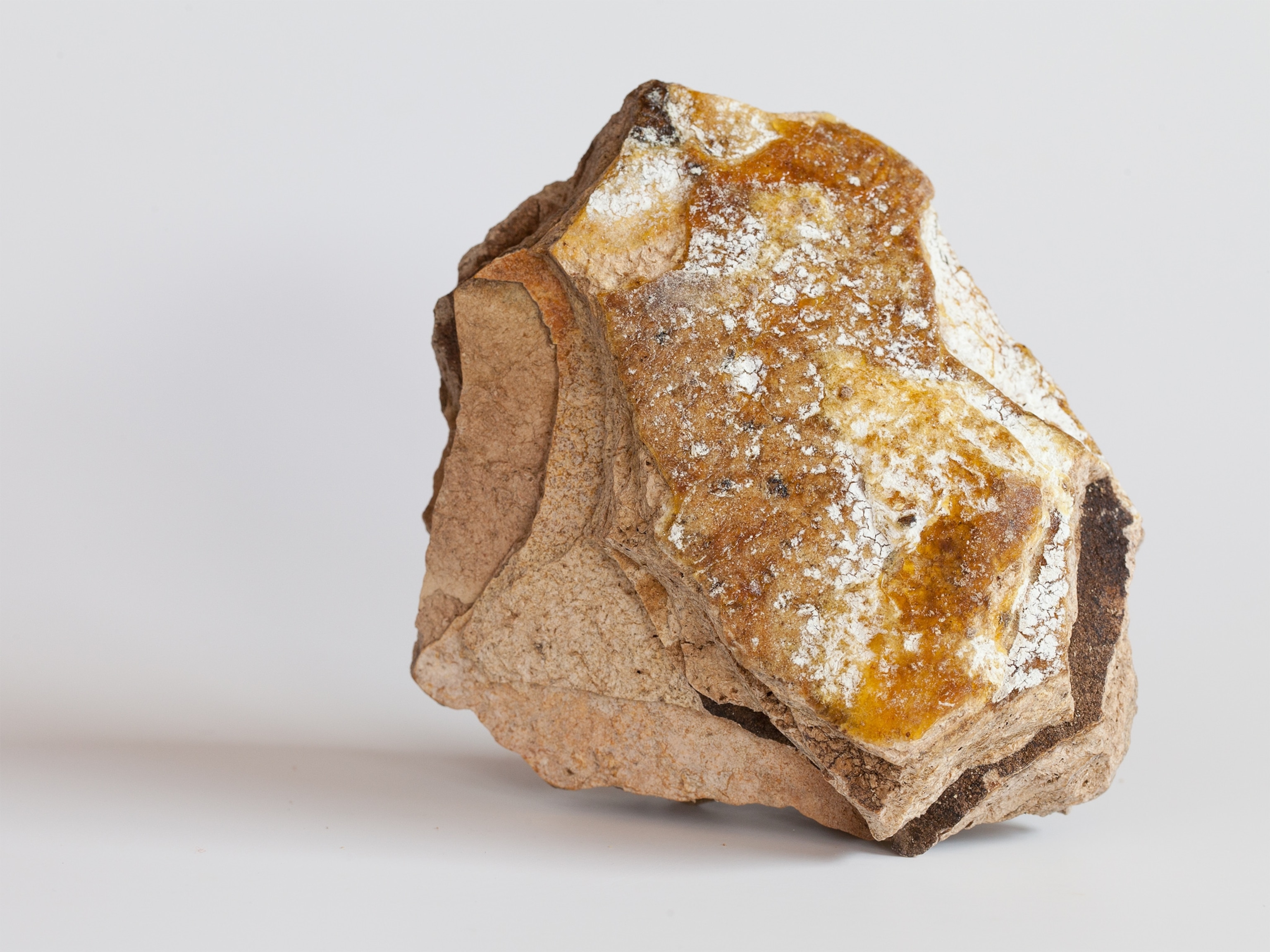
What's Ambergris? Behind the $60k Whale-Waste Find
A beachcombing U.K. boy just stumbled upon a chunk of ambergris possibly worth up to $63,000. So what exactly is it, and why is it worth so much?
Sperm whales eject an intestinal slurry called ambergris into the ocean, where the substance hardens as it bobs along. Eventually it gets collected along shores—most often as sheer happenstance, as in the case of eight-year-old Charlie Naysmith in the U.K. a few days ago.
Walking along the beach in Dorset with his dad, the boy found what looked to be a very odd rock. He and his dad used Google to help identify it as ambergris. Weighing more than a pound, it is said to be worth up to U.S. $63,000.
The value of ambergris lies in its role in the fragrance industry. High-end perfumes from houses such as Chanel and Lanvin take advantage of the ability of ambergris to fix scent to human skin.
The smell of ambergris itself varies from piece to piece, ranging from earthy to musky to sweet. If a perfume house's "nose"—the person responsible for choosing scents—likes the aroma, the ambergris can be worth thousands an ounce.
Though it is illegal to use ambergris in perfumes in the U.S. because of the sperm whale's endangered status, foreign markets, especially French, remain strong. (Learn secrets of whale evolution in National Geographic magazine.)
Scientists still don't know for sure the exact origins of ambergris. They do know that when sperm whales have a stomach or throat irritant, often a squid beak, they cover it in a greasy substance and cast it out.
(Rare Pictures: Giant Squid Eaten by Sperm Whale.)
It was once thought the ambergris was ejected by mouth. As of now, the argument seems to be weighted toward the back end of the whale.
Johnna Rizzo is a Departments editor for National Geographic magazine and the author of the nonfiction children's book Oceans. More of her writing on ambergris will appear in the magazine's October issue.
Related Topics
You May Also Like
Go Further
Animals
- How to see Katmai's famous brown bears up close—and stay safeHow to see Katmai's famous brown bears up close—and stay safe
- Spiders may lure male fireflies to their death with a call of loveSpiders may lure male fireflies to their death with a call of love
- 6 animals Nat Geo staff think are very demure, very mindful6 animals Nat Geo staff think are very demure, very mindful
- Why are cell phone contaminants showing up in tiger sharks?Why are cell phone contaminants showing up in tiger sharks?
- This parasite uses an army to suck out the guts of its enemiesThis parasite uses an army to suck out the guts of its enemies
Environment
- How billions of dollars are revolutionizing ocean explorationHow billions of dollars are revolutionizing ocean exploration
- Where to go stargazing in Chile according to a local astronomer
- Paid Content
Where to go stargazing in Chile according to a local astronomer - This coral reef should be dead—so why is it thriving?This coral reef should be dead—so why is it thriving?
- Inside the Native Hawaiian push to rebuild Maui after wildfiresInside the Native Hawaiian push to rebuild Maui after wildfires
History & Culture
- The eighth wonder of the ancient world may have an untouched tombThe eighth wonder of the ancient world may have an untouched tomb
- These countries banned music—but artists still found a wayThese countries banned music—but artists still found a way
- A man’s world? Not according to biology or history.A man’s world? Not according to biology or history.
Science
- How better posture can improve your overall healthHow better posture can improve your overall health
- We're having a COVID summer surge—will winter be worse?We're having a COVID summer surge—will winter be worse?
- Why home births are rising in the U.S.—especially for Black womenWhy home births are rising in the U.S.—especially for Black women
- Why the traditional Okinawan diet is the recipe for a long lifeWhy the traditional Okinawan diet is the recipe for a long life
- How billions of dollars are revolutionizing ocean explorationHow billions of dollars are revolutionizing ocean exploration
Travel
- This French region is home to the country's stretchiest cheeseThis French region is home to the country's stretchiest cheese
- How to see Katmai's famous brown bears up close—and stay safeHow to see Katmai's famous brown bears up close—and stay safe
- The women who cultivate the riches of the Ecuadorian Amazon
- Paid Content
The women who cultivate the riches of the Ecuadorian Amazon - How to plan a slow tour of the Valencia region in SpainHow to plan a slow tour of the Valencia region in Spain




